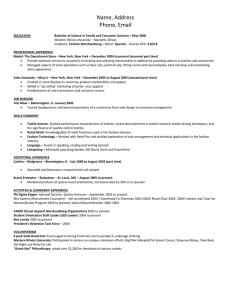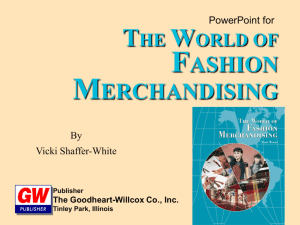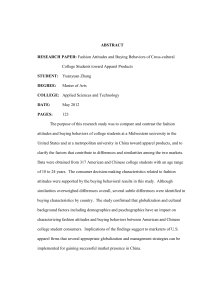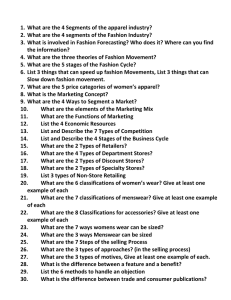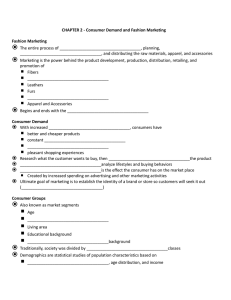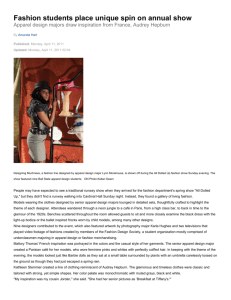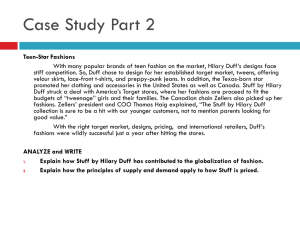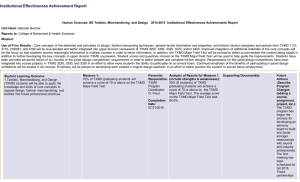Fashion and Economics
advertisement
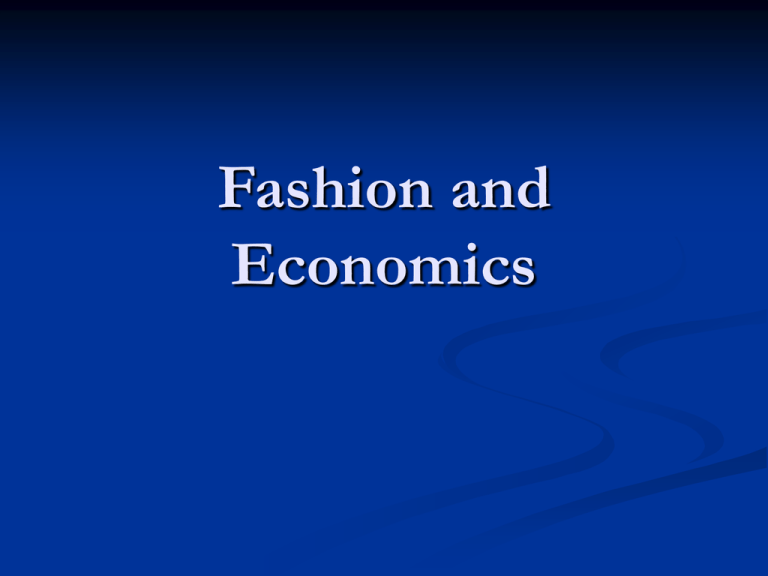
Fashion and Economics Globalization and Fashion Globalization – the increasing integration of the world economy. countries no longer limited by their own borders. technological advances – has helped improved worldwide communication systems, such as the internet. Global Competition Globalization has created increased competition between countries in the manufacturing sector of fashion. labor is a major component of cost production. countries with lower wages have an advantage over countries with higher wages. Balance of Trade Imports – goods that come into a country from foreign sources or goods that a country buys from other countries. U.S. is the largest consumer market of apparel goods in the world. Balance of Trade Exports – goods that a country sends to a foreign source or goods that a country sells to other countries. Balance of Trade – the relationship between a country’s imports and exports, and how it affects the economic health of a country. Balance of Trade Trade deficit – occurs when a country imports more goods than it exports. Trade surplus – occurs when a country sells more goods to other countries than it buys. Trade Agreements and Restrictions Free Trade – exists when a government allows products to move freely across its borders. U.S. had formed many trade agreements to improve the flow of goods with its trading partners. NAFTA North American Free Trade Agreement (NAFTA) – between the U.S. Mexico, and Canada is an example of a free-trade agreement. Goal: to enable all countries to experience free trade by eliminating or reducing tariffs, or fees, for trading goods. to resolve conflicts, international agreements restrict the quantities of textiles and apparel traded. WTO World Trade Organization (WTO) – an international organization that promotes and enforces trade laws and regulations. formed in 1995, currently has 145 member countries from around the world agreements reduce barriers to trade International Fashions Technology has increased communication around the world. Many companies place their orders over the internet. Example: A garment in a boutique on Rodeo Drive in Beverly Hills 1. Produced in China with fabric from India and buttons from Bali 2. Designed by a designer in France 3. Modeled on the runways in Milan, Italy, and Paris, France. 4. Purchased by a customer in New York City to wear at a trendy party. Impact on Domestic Economy American Textile Manufacturers Institute (ATMI) – states that the U.S. consumers spend $275 billion every year on apparel. 3 billion slacks or pants 5.7 billion shirts or blouses 370 million sweaters Supply and Demand The law of Supply and Demand affects pricing in the fashion industry. The relationship of these factors results in the prices people are willing to pay for various products producers are willing to make. Supply and Demand supply - the quantity of a product offered for sale at all possible prices. demand – the consumer’s willingness and ability to buy and/or use products. surplus – supply exceeds demand shortage - demand exceeds supply equilibrium – supply equals demand Profit Profit – the money a business makes after all costs and expenses are paid. this is the motivation to do business. Employment in the Fashion Industry Apparel businesses in the U.S. employ over 1.3 million The textile industry is one of the largest segments on the manufacturing industry. Trade quotas – restrictions on the amount of a particular good or service that a country is allowed to sell or trade.

